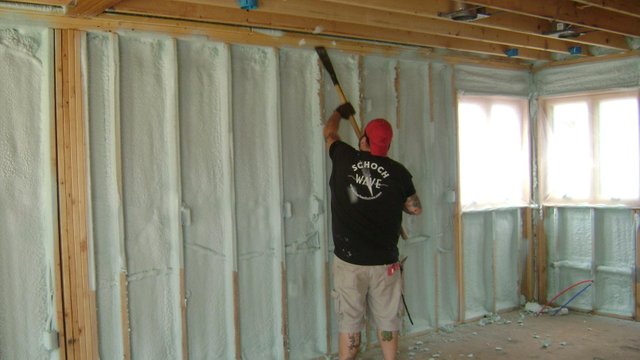Benefits And Drawbacks Of Using Spray Foam Insulation In A New Home

Spray foam insulation is made from a polyurethane-based substance that has fantastic insulating abilities. When spray foam is applied, two liquid chemical solutions are combined, and they react to create a foam. Some varieties of spray foam have a more open cell structure, meaning that the foam incorporates more air, while others have a less airy, closed-cell structure. While spray foam insulation is a sustainable and affordable insulation choice for many new homes, it does have disadvantages in some circumstances, too. Make sure you weigh both the benefits and drawbacks before choosing spray foam insulation for your new home.
Benefits of Spray Foam Insulation
Spray foam insulation provides a complete seal around your home, which greatly reduces your heating and cooling costs. When used in combination with energy-efficient heating and cooling units, it can help you meet the criteria for certain green awards and certificates, which may help add value to your new home.
Homes insulated with spray foam are well protected from the surrounding noise made by neighbors and passing cars. The spray foam absorbs sound from both sides, so your neighbors are also less likely to hear the noise you make. Sound does not even travel from room to room very well in a spray foam-insulated home.
You don't have to worry as much about mice, rats or other pests taking up residence in your new home when you have spray foam insulation. Traditional insulation provides these critters with excellent nesting grounds, but the spray foam completely seals your home, making it nearly impossible for them to find their way inside.
Spray foam insulation, particularly that of the closed-cell variety, adds structural support to your home. It makes your walls more rigid, which is an asset in areas that are prone to hurricanes, tornadoes, and wind. Increased structural integrity will also extend the life of your home, allowing it to maintain its value for decades.
Drawbacks of Spray Foam Insulation
In some situations, spray foam insulation can pull away from the framing of the insulated area after it cures. This occurs when the chemicals are not mixed properly, or when the temperature is too high during application. When the foam pulls away, it leaves gaps of uninsulated space. The risk of this negative effect can be lowered by contracting an experienced spray foam applicator with plenty of experience working with new construction.
Failing to seal the home's envelope completely with spray foam can lead to moisture accumulation. Even a small gap in the spray foam insulation can cause humid air to accumulate in an insulated space. When the temperature cools, this humidity will condense and you may end up with moisture leaks or mold development. Of course, these problems can be avoided by double checking for gaps once the foam has been applied.
Although spray foam is environmentally friendly in the sense that it reduces energy costs by providing exceptional insulation, it is made with chemicals that can have negative impacts on the environment. Many of the ingredients in spray foam insulation are petroleum-based, and the flame-retardants used to make sure the insulation does not catch fire are known air pollutants.
For most new home owners, the benefits of spray foam insulation outweigh the drawbacks, but you should still talk to your construction and architecture teams to ensure that this is the right choice for you.
To prevent leaks in the building envelope insulation can be layered, batt insulation followed by spary foam followed by batt insulation.
As a best practice tip, instead of talking to your construction and architect teams reach out to an energy consultant or another third party, to avoid having conflicts in interest.